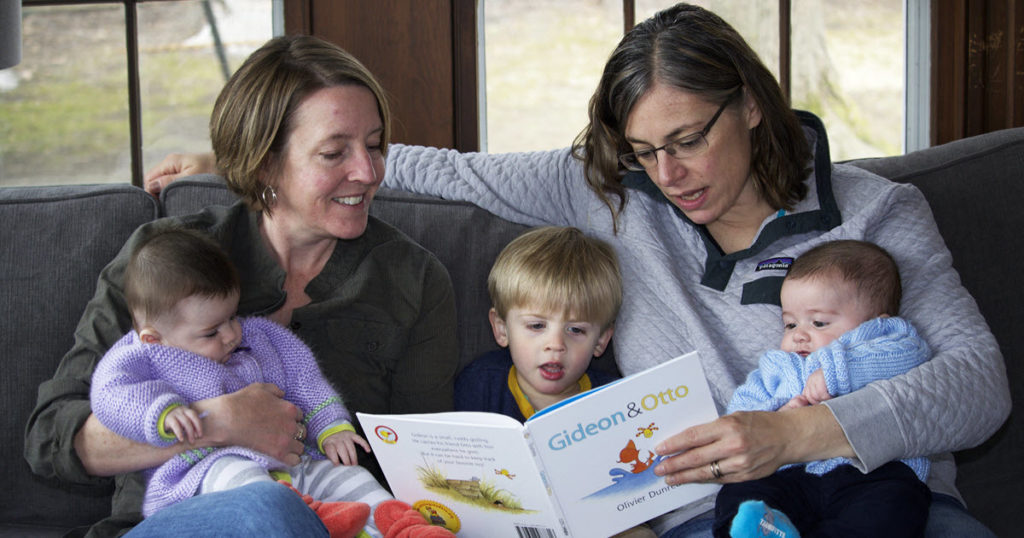Help! How Can I Make Reading Aloud to Siblings Work?
June 14, 2021 | Tips

Kudos to you if you’ve established a read aloud routine with your child. What happens when a new baby joins the family, though? Or if you’d like to do more reading aloud together as a family, but feel the strain of competing needs of your multiple children? Many families navigate reading aloud with siblings successfully and cherish the time together. The key is finding what works for your family, right now. We asked our social media community and some trusted Maine parents, and they had plenty of helpful ideas:
Use reading to give attention after a baby arrives.
A new baby brings many new tasks. Use reading aloud as a way to shower attention on older siblings. Read aloud while you feed the new baby or to help siblings be quiet while the baby naps. Shower praise on older siblings when they help share books with the new baby, too.
Recognize that all children can benefit from a range of books.
One of the obvious challenges of reading to children of different ages is their different interests in books, but consider a positive angle. Babies and toddlers receive exposure to new language, topics, and simply “how books work” even if they don’t fully comprehend older siblings’ book choices. Older siblings can be powerful reading role models; they often get excited about introducing favorite titles to a younger sibling.
Use turn-taking routines and insist “Fair is when everyone gets what they need.”
Sibling competition is common. Having routines for who chooses the books to be read, whether it’s nightly, or assigned days of the week, can reduce negotiations. Honor developmental needs, though. Your toddler may always get two choices to your five-year-old’s one because his board books are so short. A younger sibling may be too wiggly to sit through an older sibling’s book, and do better when she hears her book first and then goes off to play. Older children may get some additional reading time to enjoy their books without the distraction of younger siblings.
Try dividing up for one-on-one reading time.
If it works for your family, jointly choosing books and snuggling up all together is a wonderful ritual. Don’t despair if it doesn’t work all the time, though. If you have multiple adults at home, read aloud can be an opportunity for one-on-one time with individual kids. Creating different “Reading Zones” in your house, to which everyone disperses at a given time, can keep the experience feeling collective even if you read separately.
Mix read aloud with independent activities.
Of course, oftentimes one adult must care for multiple children. Some families have one child read or look at books alone while a sibling has a read aloud, and then swap. A baby can lay or sit nearby with a toy or a basket of his own books to explore while you read to an older sibling. An older child may dismiss younger siblings’ books as “too babyish,” but enjoy quietly drawing or building with LEGOs nearby (perhaps listening, too!)
Adjust your routine when needed.
As with many aspects of parenting, what works now may need updating in a month. If read aloud time to feel less enjoyable, or if you aren’t getting to it as much as you’d like, involve your children in a brainstorm session. Even toddlers can help think about, “When could we read together? Where could we read?”
Celebrate successes.
Perhaps the most important part of reading aloud as a family is preserving the joy of it. Compliment children often on how they contribute, whether it’s moving over to make space for a sibling, listening attentively, explaining a new word or concept, or simply choosing a great book. Cultivate positive feelings about reading aloud as a family, and you’re more likely to keep doing it!
Send us your top tips for reading to siblings and favorite photos of your Raising Reader siblings reading together! Post them on our Facebook page or email them to info@raisingreaders.org and we’ll post them for you.
This post was originally published in 2019 as part of our “Tips and Tricks” series for parents.
